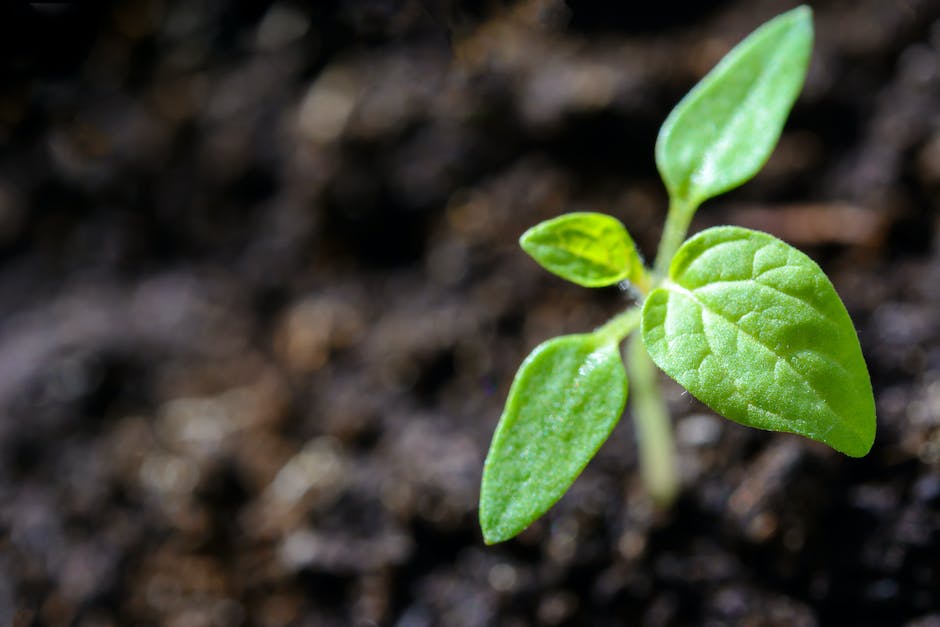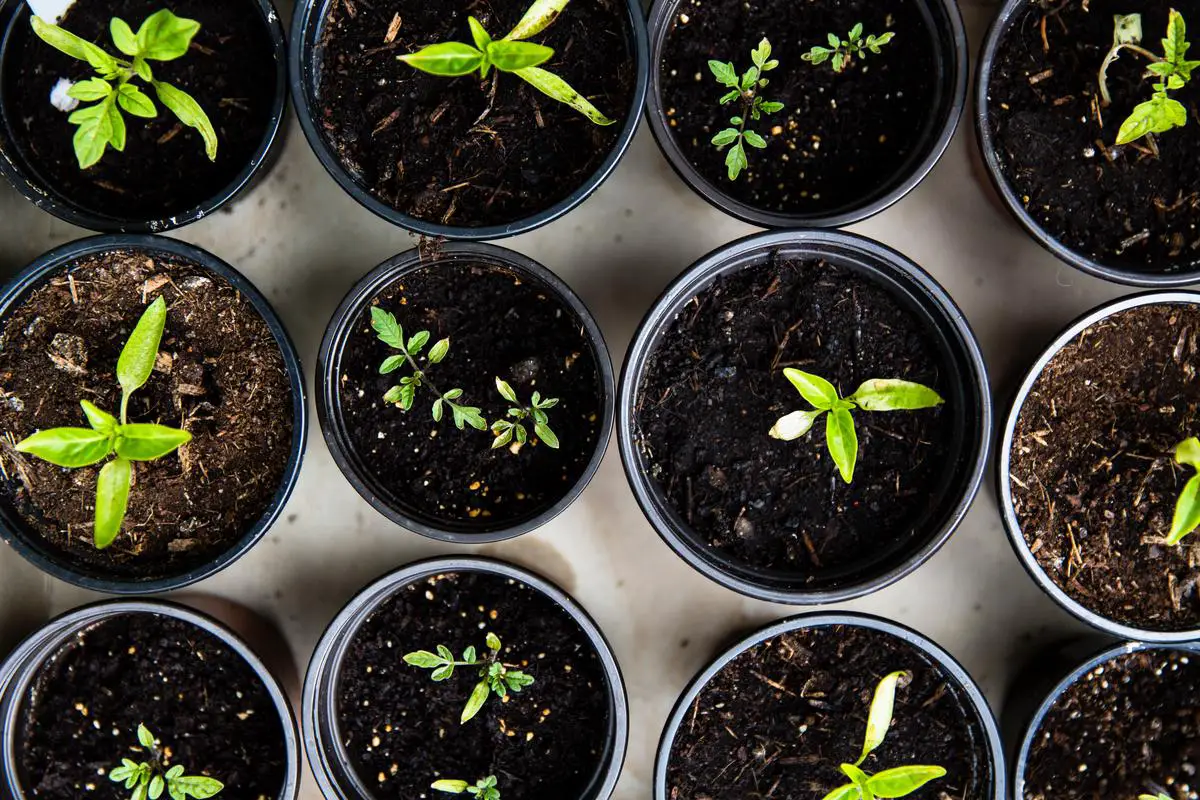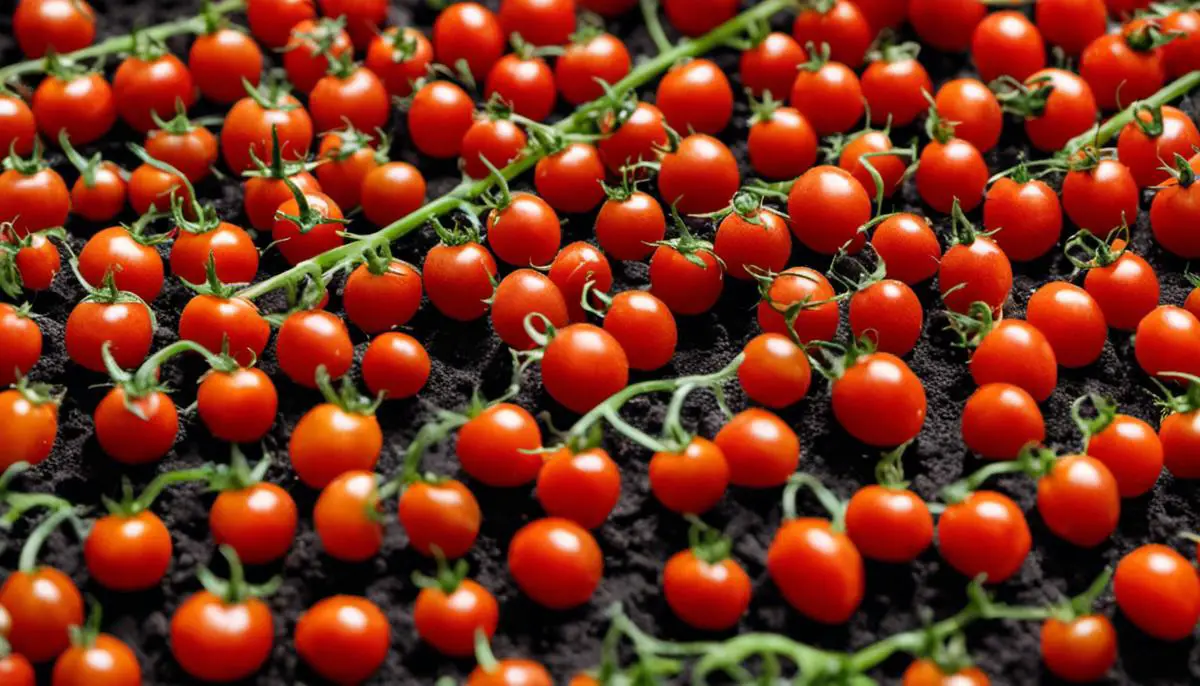Welcome to the exciting world of gardening, where we delve into the fascinating process of making life sprout from a tiny seed. In this detailed guide, we journey through the intricacies of tomato seed germination, unfolding the science that breathes life into your homegrown tomatoes. We will navigate through distinguishing the types of seeds suitable for your garden and scrutinize how environmental factors play a pivotal role in seed germination. Furthermore, we’ll unearth various seed starting techniques, weighing their pros and cons based on your resources and preferences. From sowing your seed in the comforting embrace of a seed starting mix, to the adventurous route of a plastic bag, we will showcase them all. Our journey doesn’t stop at mere germination, we will guide you in nurturing and transplanting the tender seedlings, watching them grow into robust plants. Embark with us on this enlightening journey of understanding, cultivating, and ultimately, reaping the fruits from your very own tomato plants.
Understanding Tomato Seed Germination
Understanding Tomato Seed Germination
Germination is the process by which a plant grows from a seed. Tomato seed germination is a crucial first step in cultivating your own tomato plants. The seeds are embedded in the fruit’s pulp and are typically yellow or brown. The process begins when the seed absorbs water, activating the enzymes that trigger the plant’s growth. As the seed coat softens and splits, the embryonic plant, comprising a shoot and root, starts to grow. Active germination concludes when the shoot emerges from the soil and the first pair of true leaves form.
Reader Poll: What online courses would interest you?
Types of Tomato Seeds for Home Gardening
There are various types of tomato seeds, but heirloom and hybrid seeds are the most commonly pursued for home gardening. Heirloom varieties are tomato seeds that have been passed down through generations for their unique characteristics. They are pollinated by natural means, offering richer flavors and colors compared to their other counterparts.
Hybrid seeds, on the other hand, result from cross-breeding different varieties of plants to emphasize desirable traits, such as disease resistance or uniform appearance. While they may offer more predictability and robustness, they generally don’t taste as good as heirlooms and don’t breed true to type, meaning seeds saved from hybrids won’t produce the same type of tomatoes when replanted.
Environmental Factors Influencing Germination
Various environmental factors can dramatically influence tomato seed germination. Temperature is of utmost importance; the most ideal temperature range for tomato seeds to sprout is between 60 and 85 degrees Fahrenheit. In this range, most seeds will germinate within 6 to 12 days.
Subscribe to our newsletter!
Water plays a critical role as well, as seeds must absorb a significant amount of water to germinate. However, too much water can create an environment prone to mold and disease. Proper soil moisture is key in promoting healthy germination.
Light factors are less crucial to germination, as most seeds develop best in the dark. But once the shoot emerges from the soil, the plant requires light for photosynthesis. Therefore, as soon as germination occurs, provide ample light to the young plants to encourage optimal growth.
Last ly, soil quality affects the germination process. The soil should be well-draining and have plenty of organic matter to provide needed nutrients. A pH between 6.0 and 6.8 is optimal for tomato plants. As for depth of planting, tomato seeds should be sown about 1/8 to 1/4 inch deep.
Understanding the science behind tomato seed germination, and taking into account these environmental factors, can greatly enhance your success in home cultivation of tomato plants.

Seed Starting Techniques
Choosing Your Tomato Seeds
The first step in germinating tomato seeds is choosing the right seed variety. Many types of tomatoes are available in seed form, including both determinate (bushy type and stop growing at a certain height) and indeterminate (keep growing and producing fruit until killed by frost) varieties. Each type of tomato has unique growth patterns, disease resistance, and fruit characteristics, so choose a variety that matches your growing conditions and preferences.Germinating Tomato Seeds Using Seed Starting Mix
One common method to germinate tomato seeds is using a seed starting mix. This mix is specifically designed for germinating seeds with the right nutrients and texture to encourage growth. Here are the steps:- Fill a seed starting tray or pots with the seed starting mix.
- Plant your seeds about 1/4 inch deep in the mix. Space seeds about an inch apart.
- Cover the tray or pots with a clear plastic wrap to create a mini-greenhouse effect, trapping in moisture and warmth.
- Place the tray in a warm location, ideally at about 75 degrees Fahrenheit.
- Keep the soil moist, but not soggy, and avoid letting it dry out. You can use a mist sprayer or drip water gently onto the soil.
- After 6-14 days, your seeds should start to sprout. Once they do, remove the plastic and place them in a sunny area or under grow lights.
Germinating Tomato Seeds in a Plastic Bag
Another method to germinate tomato seeds is using a plastic bag which creates a humid environment that seeds love. This is particularly useful if you want to germinate a lot of seeds at once. Here’s how:- Moisten a piece of paper towel and wring out the excess water.
- Place your tomato seeds on half of the paper towel, about an inch apart.
- Fold the other half of the paper towel over the seeds.
- Slide the folded paper towel into a plastic bag.
- Seal the bag and place it in a warm area, such as the top of your refrigerator.
- Check your seeds daily to make sure the paper towel remains moist and to check for sprouting.
- Once the seeds sprout, carefully remove them from the paper towel and plant them in a seed-starting mix.
Choosing the Right Method
Both of these methods can effectively germinate tomato seeds, but the best choice depends on your resources and preferences. If you prefer a simpler, more traditional method, or if you are only germinating a few seeds, the seed starting mix might be the best choice. On the other hand, if you want to germinate a large number of seeds at once, or if you prefer a method that doesn’t require soil, the plastic bag method might be a better fit.
Photo by markusspiske on Unsplash
Seedling Care and Transplantation
Caring for Germinated Tomato Seedlings
Once your tomato seeds have germinated and seedlings have begun to grow, they require proper care and attention to ensure steady and healthy growth.
Watering Guidelines
When it comes to watering, remember that seedlings prefer a moist but not soggy environment. Water gently using a spray bottle or carefully use a small spoon to avoid damaging the tender roots. Keep the growing medium lightly moist, but be careful about overwatering as this can lead to the growth of fungus and other diseases. Allow the soil surface to become dry to the touch before watering again.
Light Needs
Tomato seedlings need plenty of light. When they are not getting enough light, they will become leggy and weak. They need about 16 hours of light a day, so consider using a grow light if you can’t provide enough natural sunlight. Place the light about 2-4 inches above the top of the plants and raise it as the plants grow.
Temperature Control
Seedlings generally prefer warm indoor temperatures in the 75-80°F range during the day. However, try providing cooler night temperatures, ideally around 65°F. This variation between day and night temperatures will help produce stronger seedlings.
Recognizing Potential Issues
Monitor your seedlings closely for any sign of diseases like damping-off or pests like gnats. Damping-off is a fungal problem that can kill seedlings almost overnight. Signs include a thin, wilted stem or a stem that has darkened near the soil level. If you notice any of these issues, the affected seedlings should be removed immediately to prevent the disease from spreading.
Transplanting Tomato Seedlings
When your tomato seedlings have grown 3 to 4 true leaves, they are ready to be transplanted. This typically occurs about 6 weeks from the time of sowing. Start the transplant process by watering your seedlings thoroughly. Then, using a spoon, gently lever the plants out of their original container, being careful not to damage the roots. Transplant the seedlings into larger pots filled with fresh compost, burying them up to their true leaves to promote extra roots. Keep the transplanted seedlings in a sheltered place for a few days to recover from transplant shock before placing them in more direct sunlight.
By following these guidelines, you should have strong, healthy tomato plants ready to be planted out in your garden when the weather is suitable.

Photo by gallarotti on Unsplash
We hope this guide on tomato seed germination has illuminated the path of you venturing into home gardening or advancing your existing knowledge. There is an unmistakable joy in watching the fruits of your labor grow, quite literally in this case. As we’ve learned, the journey begins with understanding the science behind germination, exploring various options of seed starting techniques, and choosing the one that works for you. Distinct care must be given to the fledgling seedlings, and the art of transplantation is essential in ensuring their successful growth. The imparted knowledge will enable you to foster seeds into seedlings and eventually ripe, juicy tomatoes. May your garden always flourish and your green thumb thrives amidst the rows of lusciously red, spirited tomatoes, standing testament to your labor of love.

